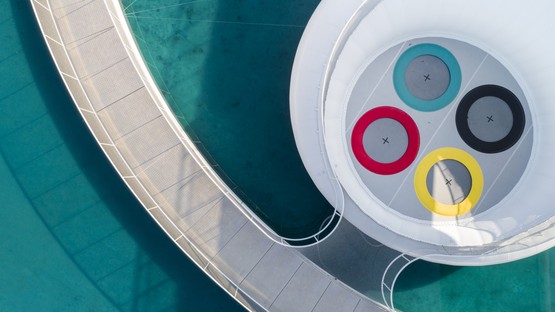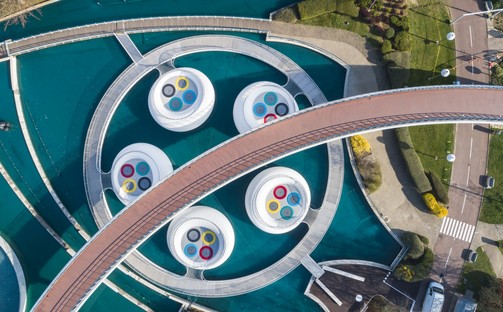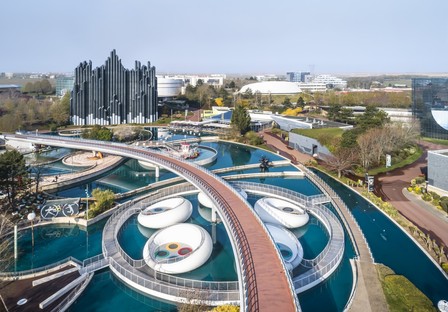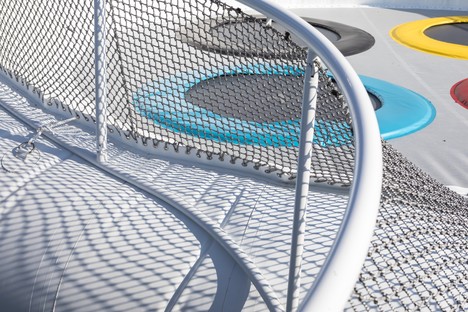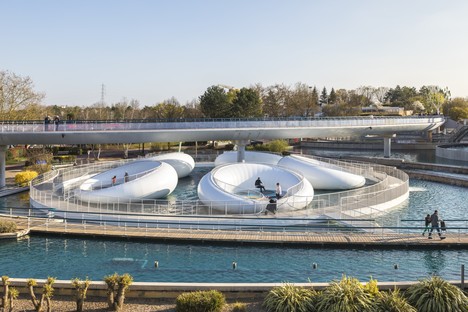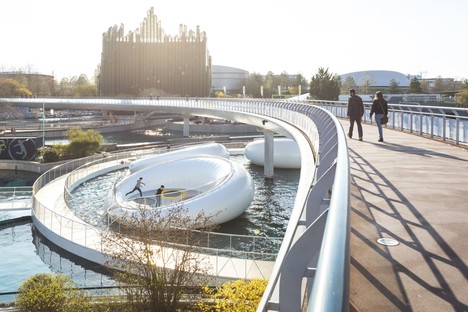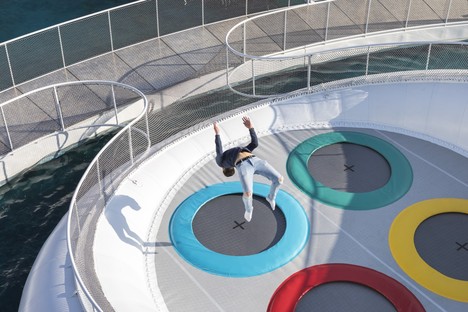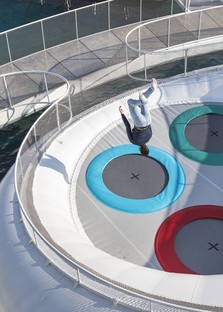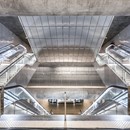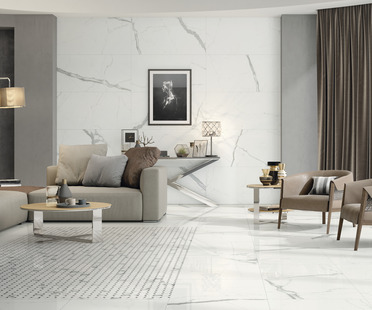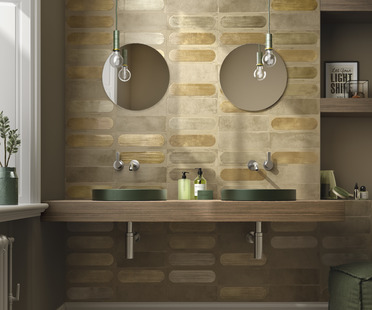16-05-2019
The ephemeral WAO architecture - Lily for Futuroscope Poitiers
WAO, Wild Architectural Objects,
Poitiers, Francia,
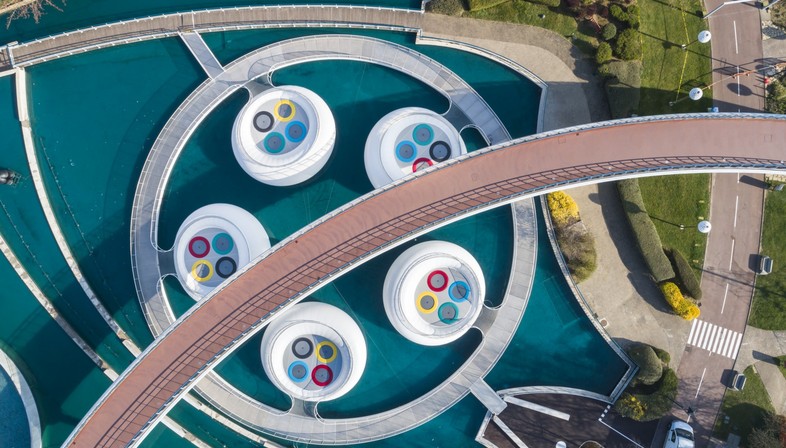
The WAO, Wild Architectural Objects studio, founded in 2018 by Irina Cristea, David Joulin and Grégoire Zündel, has designed a new installation for the Futuroscope amusement park in Poitiers. Lily, the name of the new attraction, is a floating playful and sensory installation built inside the central lake of the park.
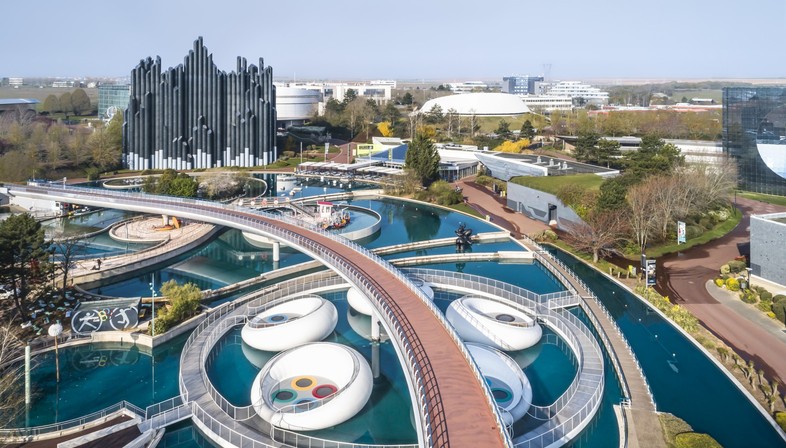
The WAO architectures are not permanent works, the studio was set up with the express purpose of designing ephemeral architectures. The architects themselves explain that the purpose of the study is "to create temporary structures and installations, the result of a broader reflection on the needs of animation and art in urban space". Faithful to this mission, the architects create flexible and playful projects that create attraction and promote interaction with and between people, temporarily transforming public or private spaces into play areas. Although ephemeral and temporary, these projects are not ends in themselves. Through these playful architectures, the cultural potential of the urban spaces in which they are installed is revealed, allowing the public to live and interact differently with the city and encouraging new human experiences. The presence of these "curious objects", which are out of the ordinary and away from everyday life, also becomes a strong attraction for encouraging new audiences to use the temporarily modified spaces. One of the key strengths of the WAO installations is to leave the spaces unaltered. The structures are made using techniques and materials that combine production and new technologies, making it possible to create large-scale ephemeral architectures even in a short time. All the projects are lightweight and easy to install, having minimal impact, and can actually be disassembled, moved and recycled.
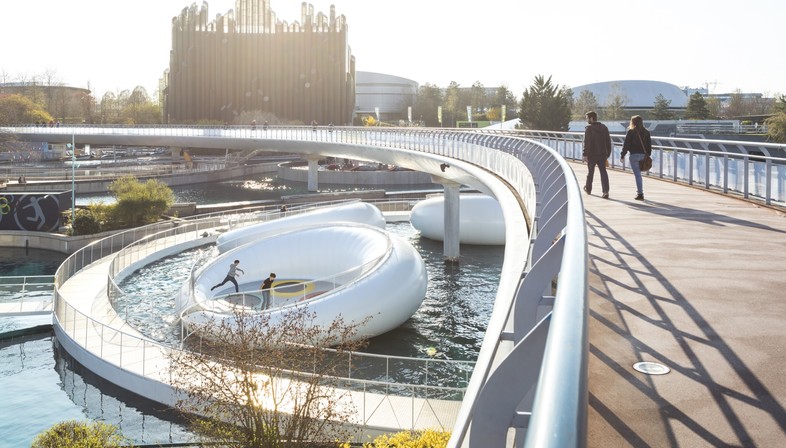
"The magic of water, the unpredictability of movements and the joy of moving around create powerful moments in which weightlessness mixes with euphoria and amazement". This is how the architects describe Lily, the new recent floating installation designed by WAO and created for the central lake at Futuroscope, the multimedia-based amusement park in Poitiers. Known as the only place in France where you can find all types of IMAX screens, a feature of the park is that some classic attractions, such as roller coasters, are experienced through simulated reality. This is based on a different idea to that of the WAO installation, which instead promotes active play and contemplation of the landscape.
The beautiful photographs by Sergio Grazia highlight its main forms and elements. Lily is made up of five gigantic buoys moored to a floating bridge of 40 m in diameter, which encloses them and gives you the opportunity to take a relaxed circular stroll around the landscape. The buoys enclose a series of elastic trampolines to be used for playing or simply as a resting place where you can lie in the sun. The whole installation is brought together by a handrail that stretches out for a total length of 200 m.
(Agnese Bifulco)
Name: Lily
Project by © WAO Wild Architectural Objects (Irina Cristea, David Joulin and Grégoire Zündel).
Built WAO with TP Arquitectura (Anton and Adria Miserachs)
Location: Futuroscope Park. Poitiers, France
Date: 2017-2019
Duration of the studies : 10 months
Duration of the construction : 3 months
Duration of the installation : 2 weeks
Canvas: 1000m²
Braided mesh: 410m²
Air: 450m3










